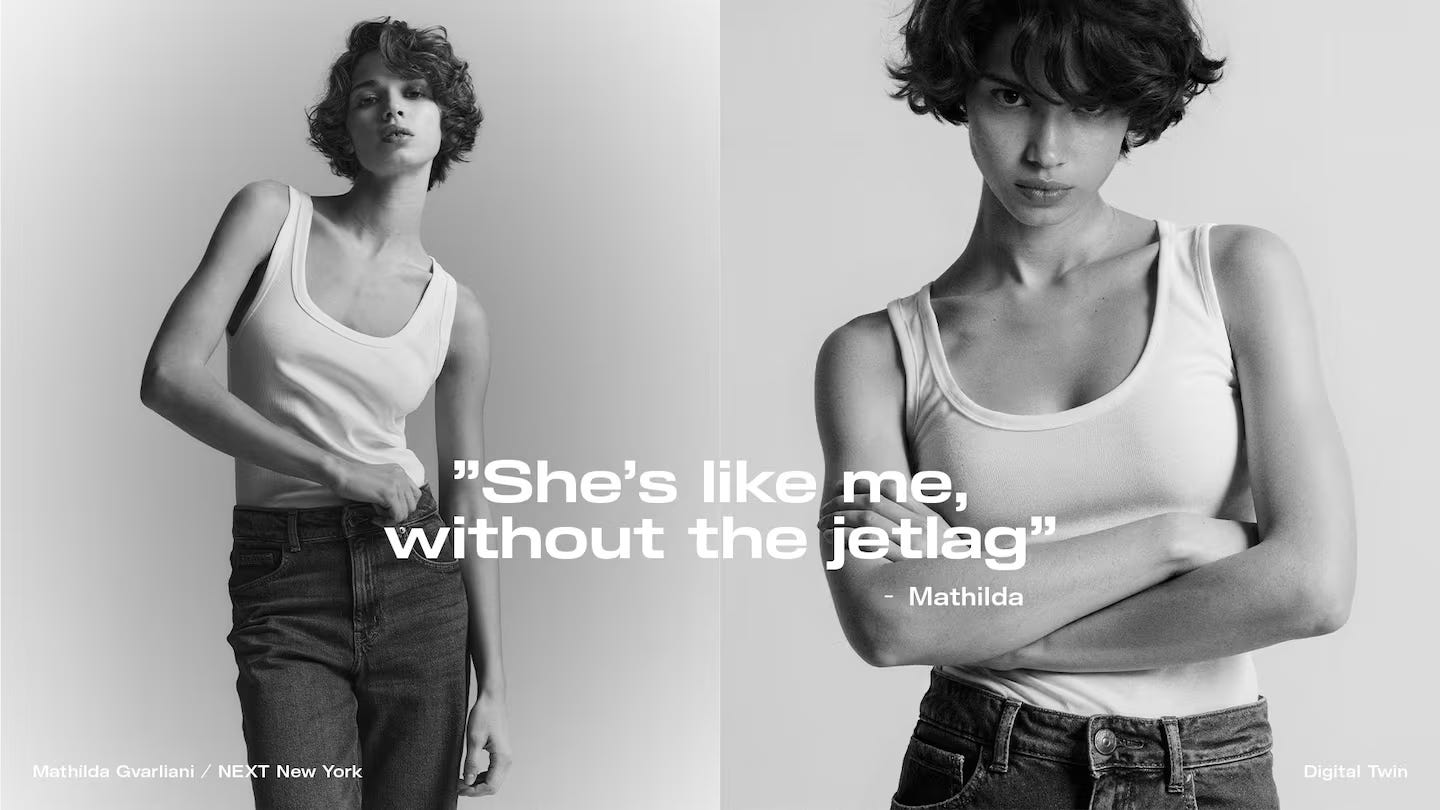Exploring Cloning Your Likeness: The Future of Fashion Tech
Your likeness refers to the recognizable characteristics that distinguish you from others. These can include visual, auditory, and behavioral traits. In other words, your AI likeness is a digital clone of you made using artificial intelligence and machine learning technology.
This technology is being embraced by retailers such as H&M which announced that it will use AI-generated images based on the likeness of human models for social media posts and marketing campaigns. Calling the AI likeness versions of the human models their "digital twins."
But why would retailers be interested in AI likeness outside of marketing and content creation purposes? It can be used for virtual try-ons. Returns are expensive and wasteful. Online apparel sales have a return rate of over 50%. Processing these returns costs time and resources. The items must be shipped back, inspected, repacked, and then potentially sent to another location such as a storefront or warehouse for resale. For some retailers simply throwing away a returned item is cheaper than re-processing it. In 2022, as many as 9.5 billion pounds of returned items ended up in landfills.
A possible solution? Having an AI avatar that looks like you try on the clothes before you hit purchase. That is exactly what Doji AI is doing. As of writing this product is still in beta, but you can join the waitlist. How it works is that you upload 8 selfies and 2 full body pictures, and after about 20 minutes of rendering it generates an avatar using your likeness. Then you can try on curated items the Doji team selected or import products to the app using shoppable links. After trying on an item you can purchase the item by clicking a button that will take you to where the item is being sold.
How do AI generated avatar virtual try-ons differ from current augmented reality (AR) virtual try-on tools available in the market? In simple terms, AR technology overlays digital content such as clothing, shoes, and accessories onto the user’s image. In contrast, AI avatars employ generative adversarial networks, diffusion models, and neural style transfer technology to create realistic 2D/3D avatars. AR tech places items onto you, while your AI avatar can simulate how clothing fabric will drape on your body.
Without diving too much into the complex subject matter of AI privacy and safety. You have to be comfortable with your likeness being collected and analyzed. An alternative to having an AI avatar based on your likeness is using avatars or models with similar features as you such as skin tone and size. For example, Google Shopping has a tool where you can see apparel items on models of different shapes and sizes.

As cool as this tech is, it comes at an environmental cost. The technology used to make AI avatars uses a vast amount of electricity and water resources in every step from training to deployment, and fine-tuning.
There are many things to consider, but I'm excited to see how this use case of generative AI evolves.




